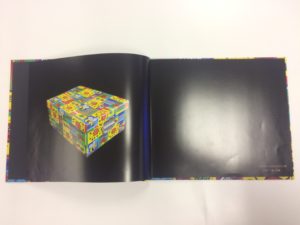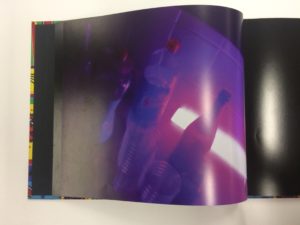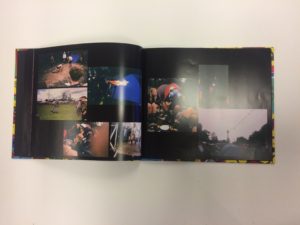How is McCurry’s images different compared to Singh in the way that they represent Indian culture?
Representation is the way in which a particular person or thing is portrayed. therefore in photography the was something is presented is usually down to the artist an how the are capturing the image. Particular subject or focal points in photography are usually seen in different ways as every photographer has a different style and represents what they see it as in their minds eye. Different representations of a person for example can either show them in documentary form where they are being compleatly natural and themselves or can be fashion photography and the individuals purpose has now compleately changed as they are being represented in a different light.
India is rich with life, culture and colour. People often think of India as the colourful, scented land of beauty and and wonder and represent it in a positive light, however it can be a place which can be represented quite the opposite if you look past the obvious beauty. Poverty engulfs the country and the rich culture which it once possessed is fading in the fight for survival as the poverty situation does not get any better. Nonetheless India is a place of morals in a time of Westernization. A land where humanity presents itself in the most dizzying, creative burst of culture and religions, races and tongues. The oldest civilization, and yet the youngest. The epitome of wisdom and yet modest. A place impossible to not be astonished by. Photographers approaches to the indian culture have varied over the past century. Often showing either the ‘picture perfect’ image of indian vibrancey and traditional ways which make whats seems like the perfect vision or a more realistic style of photojournalism which documents the countries culture in the more naturalistic way. In my opinion there is right or wrong to represent the indian culture unless it is a lie because it depends on what the photographer intends to portray.
Local Indian Photograper Raghubir Singh captures Indian culture as a form of documentation. Singh belongs to a tradition of small-format street photography, pioneered by photographers like Henri Cartier-Bresson he developed a certain sophistication to his work where he was able to represent his home land in its natural form. Through travelling around the world with various photographers spending most of his time capturing the indian culture he built his own style and aesthetic imprint. His images neither sugarcoated the culture nor showed ever aspect of the reality of the culture. The thoughtful composition of his works create natural fluency throughout the images which make them asthetically pleasing however informative in showing the culture of india. In Raghubir Singh’s represents the culture in a realistic light showing the richness of the culture but not in a way that seem overly staged and dramatized. He seems to focus on the method of the decisive moment which was influenced by his time spent with Henri Cartier-Bresson. This is the moment which occurs when the visual and psychological elements of people in a real life scene spontaneously and briefly come together in perfect resonance to express the essence of that situation. This therefore emphasizes that Singh represents India as he sees it in that very moment, he captures the natural beauty of the community and doesn’t attempt to formalise the situation to be something that it is not.

Steve McCurry represents indian culture in a very different light. His modern and conceptual style of photography highlights the different representation that he shows the indian culture as. Similarly to Singh, he captures everyday moments of india and documents the essence of what makes the country so beautiful, however it can be considered that he over staged and falsifies his images into a way that they do not represent the truth of indian culture.

In the article “A Too Perfect Picture” Teju Cole in reference to world known photographer steve McCurrys photographs in a negative light stating that, “The pictures are staged or shot to look as if they were. They are astonishingly boring.” This is a very strong personal opinion, which i myself disagree on, however McCurrys work has been widely criticised for being “too perfect”. Cole highlights that McCurrys iconic images represent Indian culture in a very specific, in almost an exaggerated and falsified manner. He uses bold, vibrant colours with “crisp composition”. Cole goes on to discuss why McCurrys photographs are so popular and he comes to the conclusion that it is due to the fact that his photographs “because they evoke an earlier time in Indian history, as well as old ideas of what photographs of Indians should look like, what the accouterments of their lives should be: umbrellas, looms, sewing machines; not laptops, wireless printers, escalators. ” Cole explores some interesting interpretations of McCurrys work and highlights that the way in which he captures photography may not capture the current culture in India but focus on the old ways of their culture as it produces near to perfect images as they are thoughtfully composed and contain a sense of beauty through the colour and use of wide eyes he captures in his image. His work has been criticized for not portraying the issues of India in the current world and lacking a sense of reality to his imagery.
Nonetheless other articles such as ‘In defense of Steve McCurry‘, argue in defense of his photography, ALLEN MURABAYASHI begins his article with dismissing the accusation that McCurry stages his photographs and goes on to state that he is a talented photography that possess incredible skill in the photographic world to create mesmerizing images which tell true stories. Cole seems to favour Sighn’s photography as he adopts a street photography style documenting everyday life on the street, which to many may seem more natural. However due to McCurrys clever composition and persistence to take around 250,000 images in the course of a 3- month assignment he is able to capture almost perfect images because he spends the time searching for individuals and situations that create beautiful story telling images.
“Cole’s point of view is also a bit of historical criticism with a contemporary lens. McCurry’s Afghan Girl is one of the most iconic and recognizable images of the 20th century. To suggest in the 21st century that it is somehow a vacuous, staged image is spurious. McCurry helped define a style of photojournalistic portraiture that Cole finds objectionable.”
The way a photography may represent a situation, culture, event, individual does not distinguish whether the image is real or has been subject to objectivity. All photographers are evident to some subjectivity as they are placing the camera in a certain position to capture the image they seen in their minds eye. This means that all photographers are going to see subjects in a different manner and therefore are likely to represent them in a different way depending on personal preference. McCurry and Sighn are just two examples of photojournalist who represent indian culture in different ways, neither necessarily fake or untrue but just adopting different styles of photography and exploring different aspects of indian culture.











